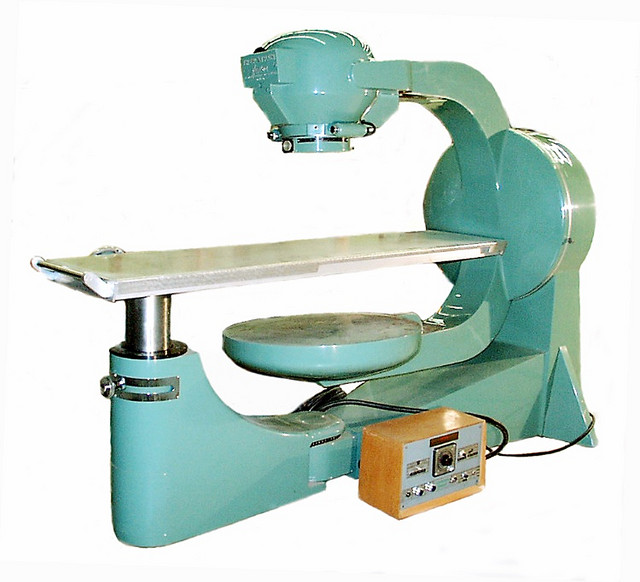It is a soothing Sea Foam Green.
It has smooth, windswept lines, like a Henry Moore sculpture in eight feet of cast steel frame.
It is Ottawa-made and could be displayed in any art gallery in the world. Yet it often goes unnoticed by visitors, tucked in a corner of the Science & Technology Museum off Lancaster Road.
Writers compose biographies of people. I researched a biography of this artifact. I walk through our warehouse and study the artifacts the same way others people-watch on the subway. There is character in things. They tell a rich story.
My favourite is the Theratron Junior built in 1956.
Canada made 140 of these radiation therapy devices and sold them all over the world for $25,000 apiece. A few are still in service in Cuba and Burma, Argentina and Uruguay. One is still used at a veterinary hospital in Barmen, Germany.
We were so proud of them we put the Theratron in the Canadian exhibit at the 1962 World’s Fair in Seattle. The German exhibit had strudel. The French exhibit had art from the Louvre. Canada had the Theratron, and a Black Brant rocket, and an Alouette satellite. We were fresh and modern and confident, and a scientific powerhouse. This is how we showed ourselves to the postwar world.
We were the third country in the world to put a satellite in space, after the Soviets and the Americans. We were the second country to sustain a nuclear reaction, but went in a very different path than other countries. We made Canada a leader in medical physics, thus – the Theratron Junior.
It was a sophisticated cobalt-60 machine that used high-powered gamma radiation to kill cancer cells. This model was sold to a hospital in Binghampton, NY. I spoke to an 86-year old technician who worked there. She recalled one patient, a five-year old boy with a brain tumour. They asked him to hold a Dinky toy so he’d lie still on the Theratron couch.
The cobalt came from Chalk River, Ont. The casting and technology and design came from a factory on Laperriere Avenue run by Atomic Energy of Canada. To think a small Ottawa factory built this Canadian innovation and shipped it all over the globe.
I’ve interviewed retired Theratron workers, engineers and salesmen. Their attachment to these machines was beyond an emotional investment; they had pride. They knew they were part of a leading scientific effort. They were world leaders – and they knew it.
Today the old factory sits empty. The retired Theratron Junior is on permanent display at our museum, but taken for granted.
To me it is a streamlined artwork that speaks to Canadian pride and confidence, and could easily belong in a sculpture garden.
(Editor’s note: the author is curator of physical sciences and medicine at the Canada Science & Technology Museum in Ottawa) 








